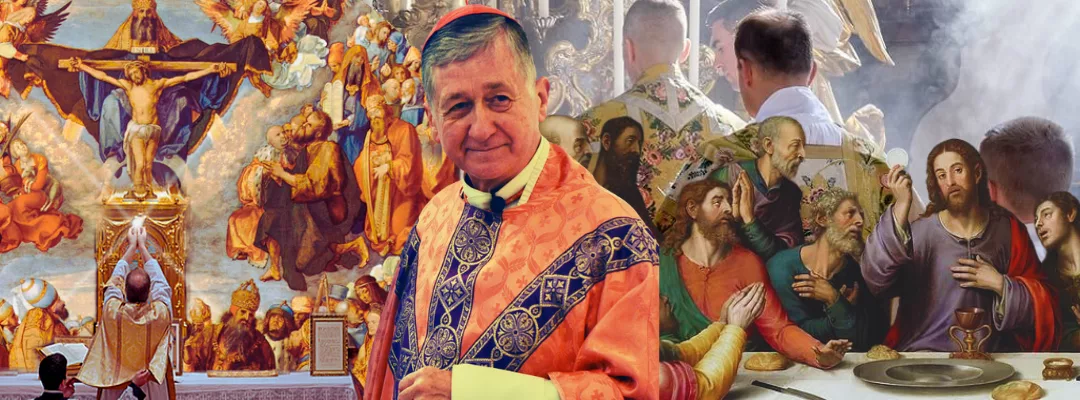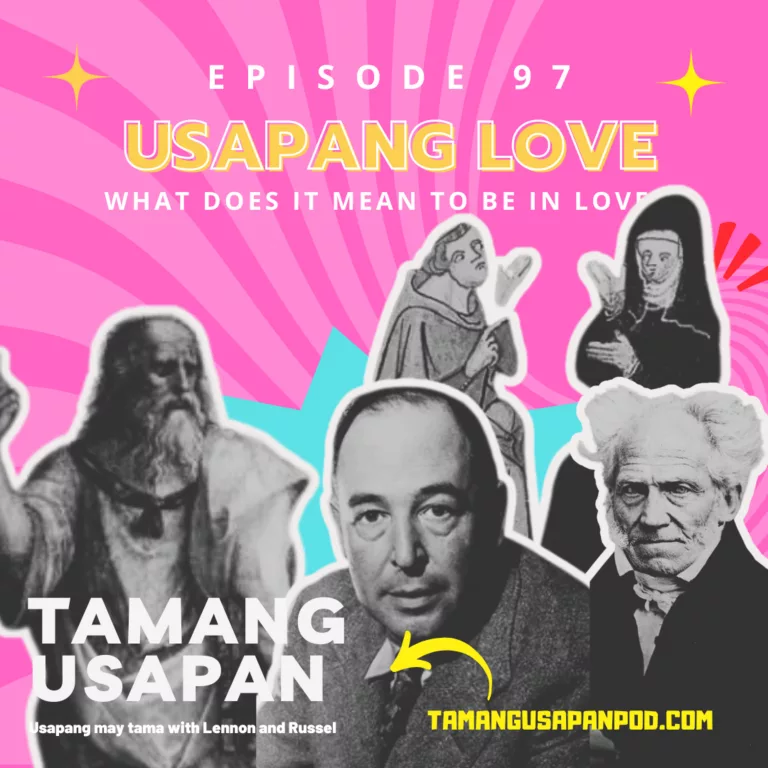“Tradition means giving votes to the most obscure of all classes, our ancestors. It is the democracy of the dead. Tradition refuses to submit to that arrogant oligarchy who merely happen to be walking around.”
— G.K. Chesterton
On September 3, 2025, Cardinal Blase Cupich published an essay in the Chicago Catholic (read here) attempting to distinguish between Tradition and traditionalism. He began with Jaroslav Pelikan’s well-worn aphorism: “Tradition is the living faith of the dead, traditionalism is the dead faith of the living.” Allow me, then, to begin with Chesterton’s.
The Cardinal is a bishop of the Church, with the fullness of the priesthood. I know his formation at the Università Pontificia Gregoriana and the Catholic University of America is impeccable. I, on the other hand, am but a neophyte priest, without his breadth of pastoral experience or theological depth. Yet the philosopher in me (or, perhaps the pretentious part of me) cannot resist responding to his pastoral “clarification.” (Note: my editor told me to take this paragraph down as it risks a “reverse appeal to authority,” but this is my style so please allow me some break with this).
Let us then break down the Archbishop’s essay into its theses, expressed syllogistically, and evaluate them.
Thesis 1: Tradition is Dynamic Development, Not Static Preservation
Major Premise: True tradition preserves identity while allowing authentic growth and maturation.
Minor Premise: Doctrines such as the Trinity and Christology developed organically without losing their original essence, while St. Vincent of Lérins compared doctrine’s growth to the natural development of the human body.
Conclusion: Therefore, Catholic tradition must be understood as a living, developing reality, not static repetition.
Response
Cupich’s syllogism here is valid and, on the surface, sound. But throughout the essay he employs “Tradition” equivocally—sometimes meaning doctrinal development (Newman’s sense), sometimes liturgy, other times fidelity to the Gospel. This shifting usage risks the fallacy of equivocation. Can the average Catholic easily parse these nuances?
And this equivocation matters. If “Tradition” is always “living, developing reality,” then doctrinal contents themselves could be relativized. If liturgical customs may be superseded, why not moral norms—or even Christ’s divinity? The liberal Catholic may answer, “yes.” But this was not Newman’s intent. For Newman, development meant continuity, not rupture. Growth like that of a body: always the same identity, never mutation into another species.
As the great composer Gustav Mahler said: “Tradition is not the worship of ashes but the preservation of fire.” Faith is alive and develops, but it builds upon what came before; it does not negate it. This crucial nuance is missing in the Cardinal’s framing.
Thesis 2: Vatican II’s Teaching on Development Builds on Newman
Major Premise: The Church’s magisterium recognizes growth in understanding revelation through contemplation, study, experience, and preaching.
Minor Premise: Vatican II (Dei Verbum §8) explicitly articulated this principle, influenced by Newman.
Conclusion: Therefore, Vatican II’s teaching continues the Church’s authentic tradition by formally affirming development.
Response
This thesis, taken alone, is strong. Dei Verbum does indeed affirm Newman’s insight. The difficulty arises when it is yoked to the next thesis.
Thesis 3: The Liturgical Reforms of Vatican II Exemplify Authentic Development
Major Premise: Authentic reform restores the original essence of tradition when it has been obscured by distortions.
Minor Premise: Historical influences (Carolingian and Baroque) transformed the liturgy into clerical spectacle, obscuring its communal essence.
Conclusion: Therefore, Vatican II’s liturgical reform (Sacrosanctum Concilium) was authentic, restoring noble simplicity and participation.
Response
Here, several problems emerge.
First, Cupich risks a hasty generalization. To portray Carolingian and Baroque developments as mere distortions is an oversimplification. These eras certainly brought cultural influences, but also theological richness, chant, hymnody, and profound expressions of transcendence. Were all adaptations corrupt? Hardly. By the same logic, ultratraditionalists could accuse Vatican II reforms of being corrupted by secular or Protestant influences.
Second, a strawman fallacy creeps in. By caricaturing the pre-conciliar liturgy as universally clerical and grotesque, he misrepresents traditionalist claims. Many loved the old rite precisely for its reverence and theocentricity, not as “spectacle.”
Third, there is historical cherry-picking. One cannot isolate distortions while ignoring genuine fruits. Again, Cupich claims wholesale that the pre-Vatican II liturgy is plagued by corruption from Carolingian and baroque influences. These eras span several decades, and even centuries, are we to assume that all of them corrupted the liturgy?
Furthermore, to claim Vatican II reforms as mere “restorations” ignores that many changes (the almost exclusive use of the vernacular, Eucharistic prayers, versus populum orientation) were not mandated by SC and in fact went beyond it.
Finally, and most seriously, there is circular reasoning. Cupich argues that the reforms were authentic because they recovered the true tradition. But this assumes what must be proved: that they are the true tradition. Independent criteria, such as Newman’s notes of authentic development, must be applied.
Thesis 4: To Reject Authentic Liturgical Reform is to Misunderstand Tradition
Major Premise: Refusal to allow the Church to develop is regression into traditionalism, not fidelity.
Minor Premise: Pope Francis warns that resisting reform by clinging to the past is “going backward.”
Conclusion: Therefore, rejecting Vatican II’s reforms is misunderstanding tradition.
Response
Here, Cupich introduces a false dilemma: either embrace reform or regress. But history shows a third option—faithful preservation alongside reform. The Roman Rite has long coexisted with others (Ambrosian, Mozarabic, Dominican, etc.). Benedict XVI’s Summorum Pontificum recognized precisely this possibility: one can affirm Vatican II and yet worship in the older rite.
There is also an appeal to authority. Pelikan, Sts. Newman and Lérins, Vatican II, Pope Francis are invoked. These are weighty voices, but their authority often substitutes for demonstration. Pope Francis’ claim that traditionalists are “backward” is rhetoric, not proof. And Cupich’s essay leans heavily on rhetorical terms like “spectacle,” “grotesque,” “dead faith” which generate emotional bias rather than rational demonstration.
The pastoral implication is also problematic: equating attraction to the traditional liturgy with rejection of Vatican II unfairly homogenizes a diverse group. Traditional Catholics range from sedevacantists to ordinary lay faithful who simply find spiritual nourishment in the old rite. To reduce them all to “backward” is another strawman.
Furthermore, what about Eastern Rite Catholics? Do we hold them to a different standard? Are they “backward” because they maintain their liturgical patrimony rather than adopting versus populum and vernacular exclusivity? If not, then why treat Roman Rite Catholics who love the older form as retrograde?
Thesis 5: True Reform Means Moving Forward by Going Deeper into Tradition
Major Premise: Authentic tradition allows the Gospel to be proclaimed anew by rediscovering its essence.
Minor Premise: Tradition is the “living faith of the dead,” traditionalism the “dead faith of the living.”
Conclusion: Therefore, true reform requires going deeper into tradition so the Church can move forward.
Response
Here I agree with the Cardinal in principle. True reform is rediscovery of essence so that the Church may proclaim Christ anew in each age. Yet two problems arise:
- The Pelikan quote, while striking, does not prove the meanings Cupich ascribes to Tradition and traditionalism. What is “living faith”? What is “dead faith”? For many, the preservation of the older liturgy is precisely the fire, not ashes.
- A hidden assumption underlies his reasoning: that Vatican II’s reforms represent a pure return to the “sources.” Yet it is impossible to reconstruct the primitive liturgy with certainty. Moreover, if the liturgy must necessarily develop (as Newman teaches), then “going back” to a hypothetical archaic form risks contradicting the very principle of development.
The Grand (Unstated) Conclusion
All of Cupich’s theses lean toward an implicit conclusion: Catholics attached to the older rite misunderstand tradition and are trapped in traditionalism. But this conclusion oversimplifies. Traditionalist Catholics are not a monolith:
- Some indeed reject Vatican II outright (sedevacantists and schismatics). These are often the loudest ones online.
- Others question aspects of the reform but remain within the Church (what I call, “softie-sedes”). The danger with them is that they may say that they reject the sedevacantists, but, in principle, they coincide with some, if not most, of their talking points. They are also the loudest voices online.
- Still others see no contradiction between Vatican II and the old rite, and even hope the older form can enrich the newer one. (You might want to listen to our Sacrosanctum concilium episode with Doc Luke Brofar here).
- And many are simply Catholics who find themselves spiritually nourished by the Extraordinary Form without rejecting the Ordinary (most of the “traditionalists”). (You might want to listen to our TLM episode with Doc Luke Brofar here).
What’s the problem?
By categorizing all of these under “traditionalism,” the Cardinal misrepresents the heterogeneity of the faithful. Thus, this conclusion rests on equivocation, hasty generalizations, false dilemmas, appeals to authority, and circular reasoning.
Worse, his reasoning risks begging the question. He asserts: “The reforms are authentic because they recovered true tradition.” But this presumes what is in dispute: that Vatican II reforms are the authentic tradition. To prove this, one would need independent evidence of continuity, not the mere assertion of it.
Conclusion: Tradition as Continuity, Not Rupture
Cardinal Cupich is right to warn against sterile repetition. Tradition is not a museum. Yet, in conflating tradition with adaptability, his essay risks collapsing continuity into rupture.
The real task is not to choose between the “dead faith of the living” and a “living faith of the dead,” but to preserve the fire across the centuries. That fire is preserved not by abandoning what came before, but by building upon it in continuity.
Should we, then, affirm that “what earlier generations held sacred” is no longer sacred today? Should we say that we are better than most saints spiritually because our Mass today is “purer” than the Mass where their souls were nourished?
Perhaps the Cardinal should revisit Newman, who insisted that the sensus fidelium—the lived faith of the whole Church—guides authentic development. Why, then, do so many Catholics, especially the young, continue to be drawn to the old Mass decades after the Council? (Read Ann Mare’s experience here). Why did Summorum Pontificum bring peace, while Traditionis custodes reopened wounds?
History warns against declaring one’s own moment the “end of history.” Hegel did it; Fukuyama did it. If we apply Cupich’s reasoning, Vatican II would be the final liturgical synthesis, never to be reformed again. But by Newman’s principle, development continues. Perhaps the older liturgy still has a role in that future development—just as the “archaic sources” inspired the reforms of Vatican II.
Tradition is not ashes or spectacle, nor is it regression or novelty. It is continuity in the faith once delivered, living and growing, yet always the same flame.
Discover more from Tamang Usapan Podcast
Subscribe to get the latest posts sent to your email.





